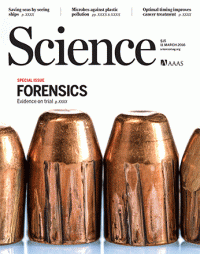You are currently viewing the abstract.
View Full TextAbstract
Diploid cells of budding yeast produce haploid cells through the developmental program of sporulation, which consists of meiosis and spore morphogenesis. DNA microarrays containing nearly every yeast gene were used to assay changes in gene expression during sporulation. At least seven distinct temporal patterns of induction were observed. The transcription factor Ndt80 appeared to be important for induction of a large group of genes at the end of meiotic prophase. Consensus sequences known or proposed to be responsible for temporal regulation could be identified solely from analysis of sequences of coordinately expressed genes. The temporal expression pattern provided clues to potential functions of hundreds of previously uncharacterized genes, some of which have vertebrate homologs that may function during gametogenesis.














